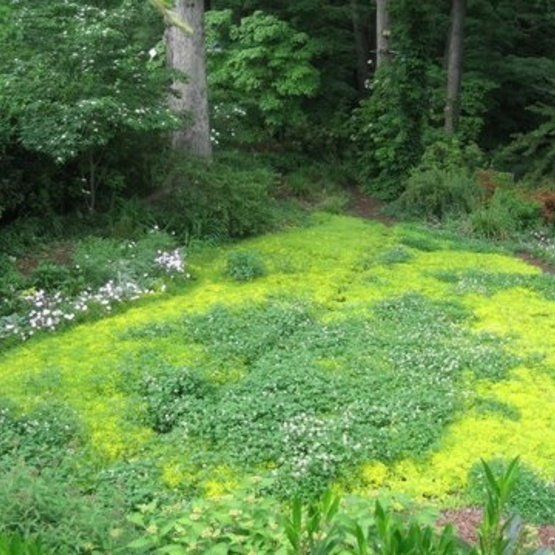
I hate the word “hate.” It’s so absolute and intolerant. Once you decide you hate something, it’s sort of hard to find the sunny side and see the other guy’s point of view.
I find it especially perplexing when hate is applied to a plant that can be made into wine and coffee (have a few drinks and sober up in one fell swoop?); eaten as a nutritious, tasty side dish; enlisted to treat infections, warts, and as an anti-inflammatory; attract beneficial insects, feeds honeybees, and ward off zombies (I’ll have to check on that last fact and get back to you); aerates the soil; and whose botanical name (Taraxacum officinale) means “Official Remedy for Disorders.”
We’re talking about none other than the DREADED DANDELION! (Bonus factoid: The name comes from the French dent de lion = lion’s tooth). Dandelions are on my radar this week thanks to a blog post at the ever-cheeky, sometimes-frothing-at-the-mouth, let’s-stir-up-the-pot-and-see-who-comments Garden Rant blog.
Susan Harris took on the Coalition to Stop Dandelions (there’s no list of the members for this “coalition”, so I’m guessing it’s a figment of the PR consultant’s imagination) for their vaguely worded, poorly reasoned campaign. They’re blaring about the trumped up “dangers” of dandelions in hopes of getting people to fork over their hard-earned bucks for a soil test kit. The CSD says soil tests are the key to stopping the Insatiable Scourge of Suburbia. Good luck with that.
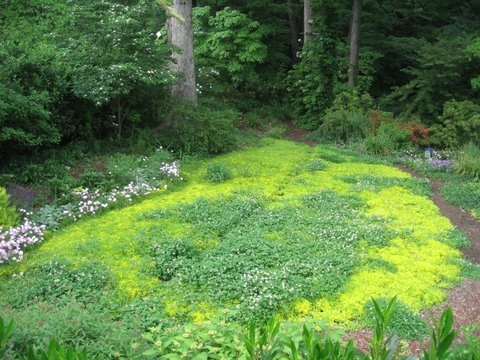 |
When You Wish…
As I read Susan’s rant, I couldn’t help but think about how successful the big lawn-care chemical companies have been at brainwashing the masses. It’s no wonder they succeeded, what with the millions of advertising dollars they throw into their multi-billion dollar business.
Dandelions get a bad rap because once the suburban migration started after World War II, these corporate merchants of everything toxic launched campaigns to convince homeowners that the only way to be a responsible member of society (and avoid the disdain of their neighbors) was to aspire to that monotonous, imagination-free dead zone called the perfect lawn.
They convinced almost everyone that dandelions – those little grantors of kids’ wishes that send hundreds of seed-bearing parasols drifting on the breeze – were the enemy. Actually, it’s mostly dudes who can’t leave their Hot Wheels obsession on the third grade playground, so they get their testosterone fix wheeling about on big-kid mowers – watch the commercials and tell me I’m wrong.
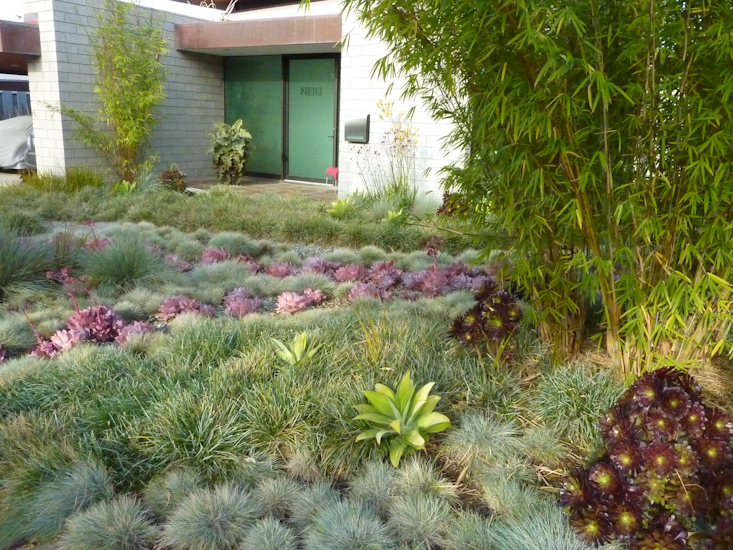
Which brings me to the Lawn Reform Coalition and our campaign to promote positive change in the garden. If you received the Fine Gardening eLetter this week, you saw the first article I wrote in 2009. I’m one of the founding members of this diverse group, working to bring a new perspective to gardens, and hoping to educate the public about the serious environmental impacts of typical lawns. We’re talking about: the fouling of waterways from fertilizer and herbicide runoff; the toxic brew that affects humans and pets; the unconscionable waste of precious potable water to keep those symbols of conformity unnaturally green year-round; the single-species palette that provides zero habitat for birds, bees, and beneficial bugs; and the air pollution, fossil-fuel consumption and noise of power tools.
I’m probably the most rabid of the Lawn Reform Coalition members, living in SoCal where the threat of water shortages is a never-ending cycle. For the life of me, I can’t understand how people sleep at night knowing that they’re squandering the single most important resource on this groovy green globe, all for the vanity of hearing neighbors compliment them on their misguided efforts.

The big question for me is, why the fascination with lawns? When done “right”, they are nothing more than an uninterrupted swath of green, laser perfect in its topography. Yes, mowed turf serves an indispensable role as a soft floor for recreation (and nude sunbathing), but nobody lets their kids play in the front yard anymore, even if you could pry them away from their X-Box 360. So what’s it doing in the front yard, anyway?
If you can’t bear the idea of a completely lawnless home, can’t we at least put our front yards and our dwindling resources to a higher use? I think so. Redesign your frontage with plants adapted to your area, especially local natives. Learn about each plant’s behavior and its cultural needs so you can choose and place them intelligently, without causing maintenance black holes. Manage your garden with a light touch, and without using fossil fuel-powered tools, toxic concoctions, and generating excessive green waste.
I’ve skittered off tracks a bit from Susan’s rant, but sometimes, all it takes to vault me out of the garden an onto my soapbox is a little poke. Thanks Susan, and thanks for listening.Grow food! Ivette Soler’s marvelous new book, The Edible Front Yard: The Mow-Less, Grow-More Plan for a Beautiful, Bountiful Garden, will get you started and knock you out with gorgeous ideas for integrating edibles with ornamental plants.

Fine Gardening Recommended Products
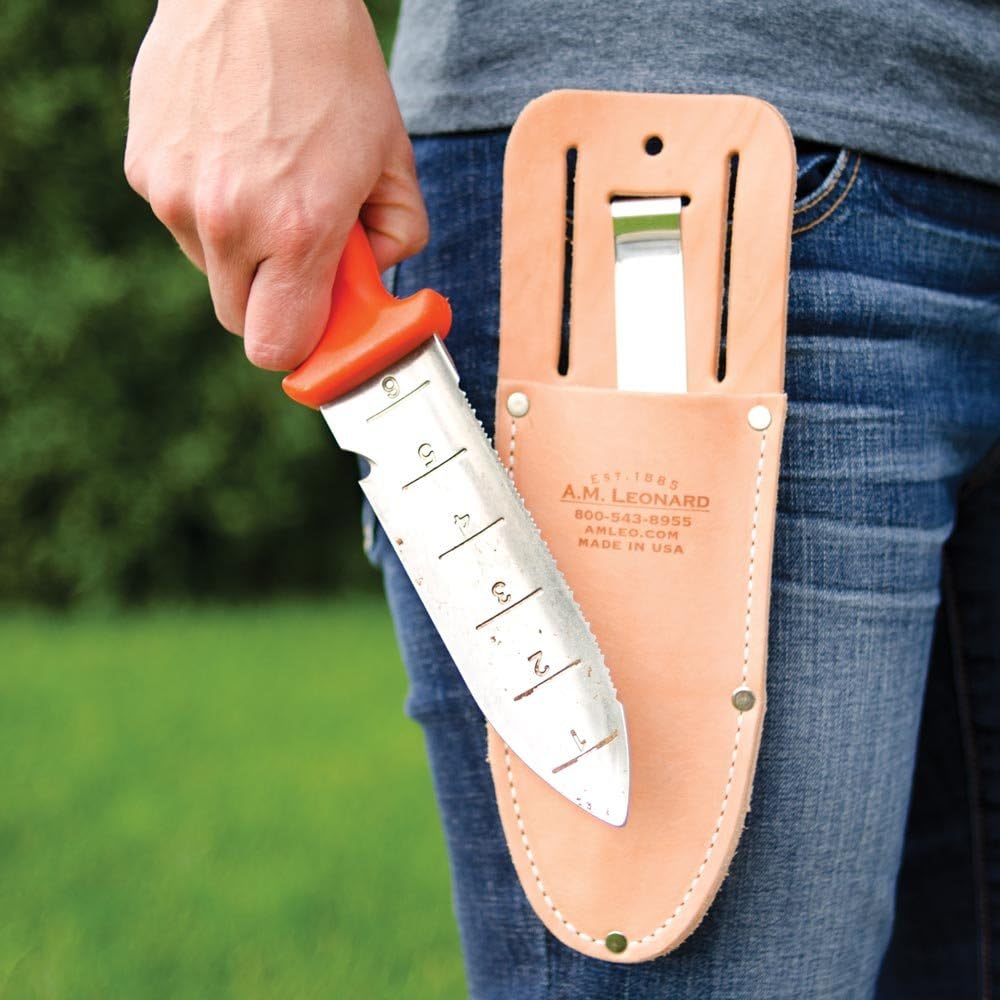
A.M. Leonard Deluxe Soil Knife & Leather Sheath Combo
Fine Gardening receives a commission for items purchased through links on this site, including Amazon Associates and other affiliate advertising programs.



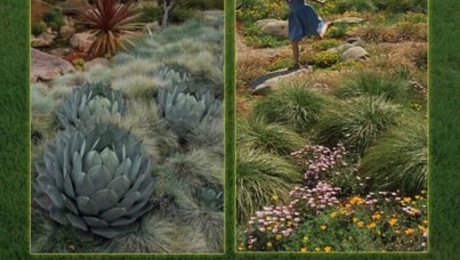


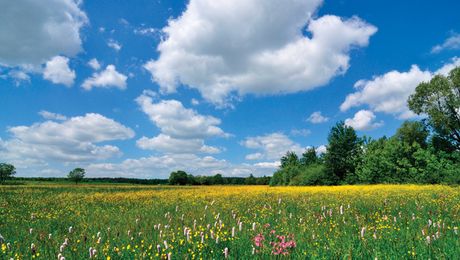



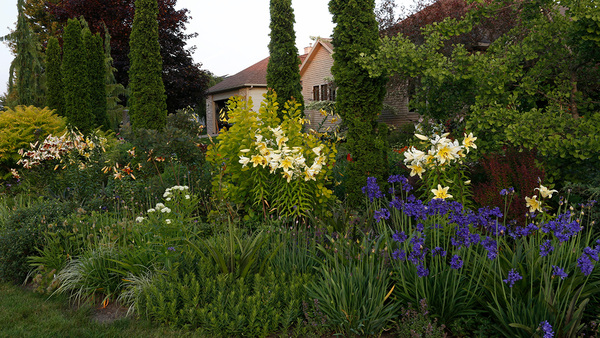







Comments
In a way dandelion is considered a Spring Flower and a good green part of our natural not cared for lawn. It’s green and is a good grower in about any type of soil. Bit of a pain in the flower beds. I think I will start calling it Taraxacum officinale from now on and that will end all the why questions about dandelion’s growing in our yard.
While we're at it, clover is another under-appreciated "weed" that I wouldn't mind seeing more of! I have a dilemma for you, Billy. In the last couple years retailers here in Florida have stopped selling liriope spicata (creeping liriope)in favor of the less invasive and more floriferous l. muscari varieties. Liriope spicata, despite all of it's wonderful qualities as a turfgrass substitute, is considered "invasive" here so I'm having trouble finding any to replace my much MORE invasive (not to mention high maintenance) St. Augustinegrass lawn. Wouldn't creeping liriope be a whole lot better than a water greedy lawn, even if it does spread by underground runners?
I am so glad to see the movement to eradicate turf taking hold! I started removing my lawn bit by bit almost ten years ago, the last remaining bit came out last summer, the sod turned upside down and stacked became the berm that forms my rain garden! A much better use for grass in my humble opinion!
JWLW: Dandelions would indeed be a mixed blessing in flower and shrub beds, but the good news is that knocking off the heads before the seeds take flight easily keeps them in check; owner's choice.
RainforestGardeners: Steve - The invasiveness of Liriope is regional, depending on soil moisture and other factors. Here in Santa Barbara, it's fairly well behaved as long at the beds aren't overwatered. If it's "officially" declared invasive (escaping into wildlands and causing problems), it's best to play on the safe side. Check the LawnReform.org site for possible leads on good substitutes.
LakeGardener: I'm happy to be affiliated with LRC, a great group of knowledgeable, dedicated folks. Sounds like you're doing your part, and hopefully, others are following your example.
To Rainforest Gardener: Please keep in mind that many of today's solutions are tomorrow's problems. While Liriope muscari may seem a good alternative to turf grass, there are many native ground covers like sunshine mimosa, blue-eyed grass, ferns, etc. Go to the Florida Native Plant Society website for suggestions.
Here are some dandelion factoids: In Europe the dandelion is considered a wildflower - and it is, since it is native there. In fact, I took a doubletake at a shop window in Germany where there were artificial dandelions decorating the window - and good quality reproductions they were too!
In Denver in the early 1900s, the dandelion had finally arrived from the eastern states. In hopes of eradicating the "weed", The Denver Post offered a bounty of $1 per dandelion for each one that was dug up - a considerable sum! Nevertheless, the dandelion won.
By the way, in my garden in Denver, the only grass allowed to grow is an ornamental. No room for a wasteful lawn.
As long as the soil is not bare, I am happy. For a lawn I grow clover, dandelions, purple bugle weed, moss and some grass, and I don't water except after 2 weeks of drought. The roots of everything go to China and the lawn recovers on its own generally. I don't even fertilize the lawn, but I do let the clippings fall, and blow all the oak leaves onto the rhododendron and azalea beds. So far, the "weeds" have not invaded the flower beds, but I do mulch the flower beds and grow a lot of perennials, with annuals to fill in. Grass is boring.
AMEN!
I also pop the flowers off the dandelions before they go to seed and I have managed to keep the little buggers at bay. If only I could get the rabbits to focus on my dandelions and not my barrenwort I'd be a happy camper. I still have them in my yard but only in areas where the grass is sparse. However, I just received my shipment of white clover seed to plant in these sparse areas (primarily doggie areas) and I hope to nip the dandelion issue in the bud. If anyone has any experience with this please post. Right now it is my spring/summer experiment.
Remember as kids seeing a variety of plants in the lawn and not just grass? I much preferred that look. I am definitely on a mission to reduce what little lawn I have left. The frontyard is half the size it was. It takes all of 10 minutes to cut with my reel mower. My neighbors stare at my reel mower by the way. But I can at least get up really early on Saturday morning get the yard cut and be done before most of my neighbors are awake and I didn't jolt them to reality with the sound of a gas mower. Sweet, plus it's great exercise...
Our two small lawns are situated to meet CCR's and to aid in fending off the Central Calif. summer heat. Most of what could have been lawn is planted in shrubs (basically, whatever public buildings or CalTrans plants on their untended median strips and sound banks!)and some free trees from our local utility district.
A local government facility (jail!) has some lawn planted in a variety of "cat's ears". It's mown and watered, but without herbicides, and it looks fine, plus it blossoms.
Log in or create an account to post a comment.
Sign up Log in